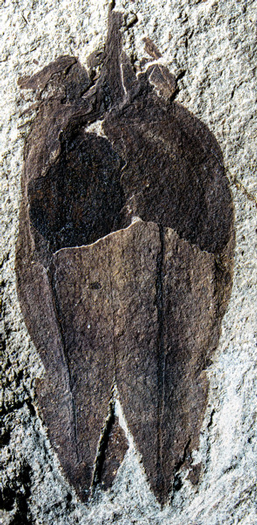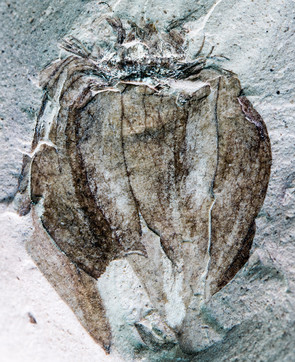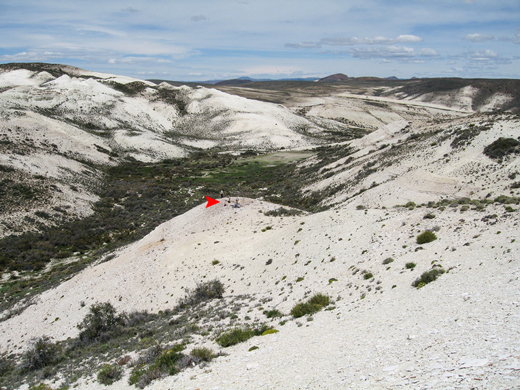Fossil Fruit Reveal the Ancient Ancestry of the Nightshade Family of Flowering Plants
Scientists working in a remote part of Chubut Province, Argentina, have found evidence of the ancient berries of a member of the nightshade family (Solanaceae). Today, some 2,500 species of this diverse plant family are known, many of these plants are economically important (tomatoes, peppers, potatoes, tobacco and petunias). The complex chemical compounds several species produce, have proved to be invaluable to medical research, but until now, molecular data from extant species suggested that these types of flowering plants evolved some ten million years ago.
The Fossil Species Has Been Named Physalis infinemundi
Picture credit: Ignacio Escapa / Museo Paleontológico Egidio Feruglio
Ancient Berries
Writing in the journal “Science”, researchers including Professor Peter Wilf (Pennsylvania State University), have identified the fossilised delicate, lantern-like husks of a type of a type of Physalis, complete with impressions of the plant’s fruit, completely turned to carbon due to the fossilisation process.
The strata in which the two fossil lantern fruit specimens were found has been dated using palaeomagnetism and volcanic ash deposits. These rock layers were deposited some 52 million-years-ago.
The Physalis genus contains ground cherries and husk tomatoes as well as tomatillos, a staple of Mexican cuisine. The entire family, like many plant families has a very sparse fossil record, however, all that changed when a team of international scientists explored the Eocene deposits at Laguna del Hunco, (Chubut Province, Patagonia, Argentina), a location where the fossils of a temperate rainforest have been preserved. More than six thousand fossil specimens have been excavated and the site has been the focus of a Pennsylvania State University, Museo Palentologico Egidio Feruglio, Trelew, Argentina, and Cornell University (New York), project for more than a decade.
The Remote Laguna del Hunco Location
Picture credit: Peter Wilf/Pennsylvania State University with additional annotation by Everything Dinosaur
The red arrow in the picture points to a group of researchers looking for fossils.
Southern Gondwana
Around 52 million-years-ago, a substantial temperate rainforest covered this part of the remnants of the giant, southern, super-continent Gondwana. Although, the climate was warmer than today, the ecosystem would have superficially resembled those fragments of forests found in the Lake District, the West Country, parts of Wales and western Scotland, where Atlantic winds bring huge amounts of rain to woodlands.
Commenting on the exceptionally rare fossil discovery, Peter Wilf (Professor of Geosciences, Pennsylvania State University) stated:
“These astonishing, extremely rare specimens of Physalis fruits are the only two fossils known of the entire nightshade family that preserve enough information to be assigned to a genus within the family. We exhaustively analysed every detail of these fossils in comparison with all potential living relatives and there is no question that they represent the world’s first Physalis fossils and the first fossil fruits of the nightshade family. Physalis sits near the tips of the nightshade family’s evolutionary tree, meaning that the nightshades as a whole, contrary to what was thought, are far older than 52 million years.”
Fossil Indicates that the Solanaceae Are a Very Ancient Plant Family

Physalis infinemundi fossil. In this specimen, the former papery and lobed husk is broken at top to reveal the large, fleshy berry underneath
Picture credit: Peter Wilf/Pennsylvania State University
Rare and Exceptional Ancient Berries
Mónica Carvalho, a former student at Pennsylvania State University and a co-author of the scientific paper explained:
These fossils are one of a kind, since the delicate papery covers of lantern fruits are rarely preserved as fossils. Our fossils show that the evolutionary history of this plant family is much older than previously considered, particularly in South America, and they unveil important implications for understanding the diversification of the family.
All extant members of the Physalis genus are found in the New World and the research team notes that the Physalis fossils show a rare link from ancient Patagonia, to living Physalis plants of the Americas.
However, most other fossil plants such as Eucalyptus, found at Laguna del Hunco have living relatives concentrated in Australasia. This distribution pattern reflects the geographical connection between South America, Antarctica and Australia. This new study raises the intriguing possibility that more, potentially older Solanaceae fossils might be discovered at more southerly latitudes.
The researchers conclude that their results reinforce the emerging pattern wherein numerous fossil plant taxa from southern Argentina and Antarctica are substantially older than their dates of origin derived from molecular research.
Everything Dinosaur acknowledges the contribution of Pennsylvania State University in the compilation of this article.
Visit the Everything Dinosaur website: Everything Dinosaur.








Leave A Comment